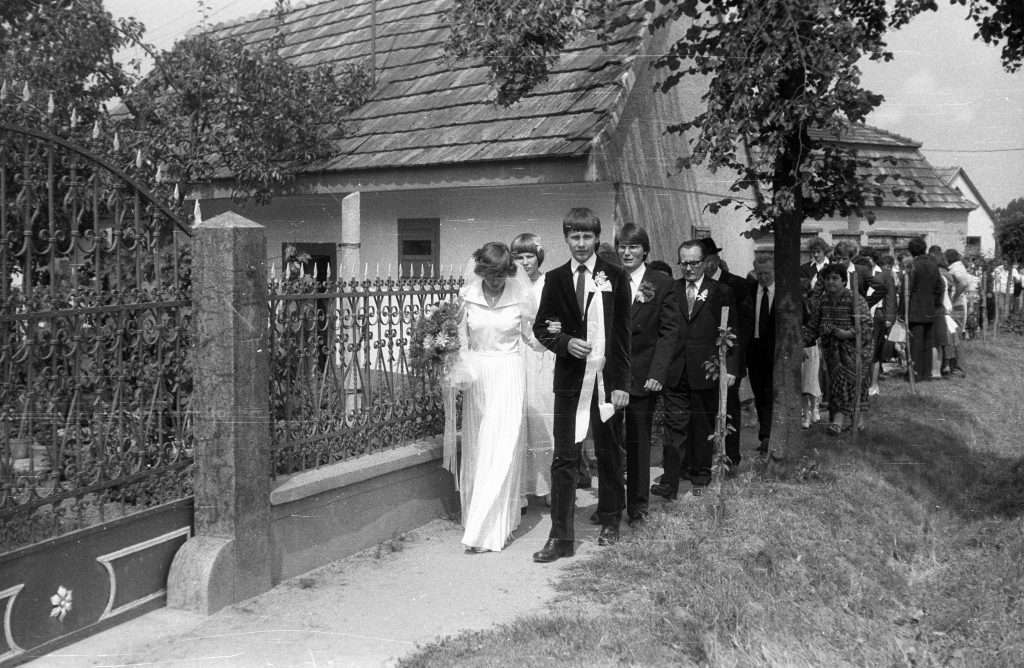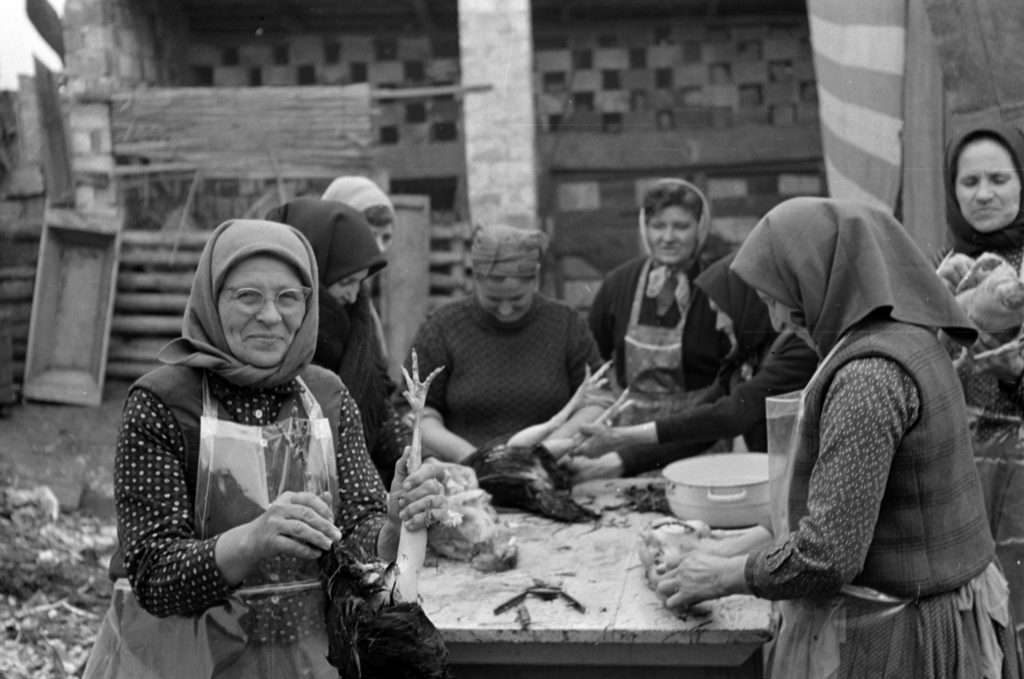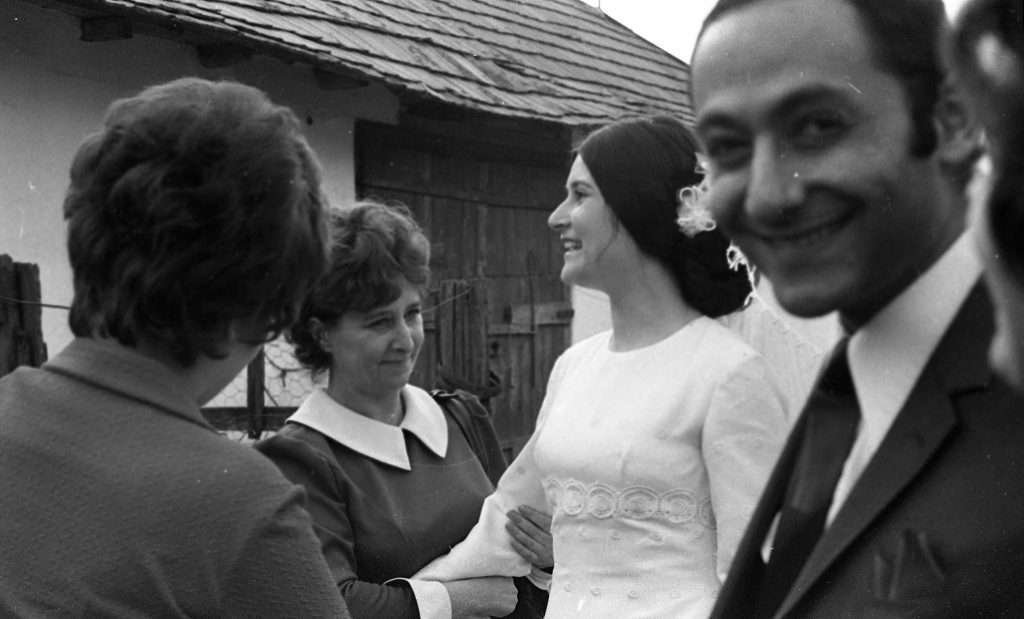Hungarian weddings 40 years ago: “and then the bride threw the cake on the ground”
There is a certain charm to traditional weddings around the world, which can never be forgotten. For Hungarians, a traditional wedding in the countryside meant a loud march on the main street, homemade décor, and a group of cheerful women cooking.
Szeretlek Magyarország writes about a traditional Hungarian rural wedding from 40 years ago, the kind that made a whole village buzzing in the summertime.
Although I am only in my early twenties, I also remember the march that the author of the article describes: the family and the guests walk through the main street of the village, which is observed by everyone who did not get invited. The sight of the bride dressed in an elaborate white dress on the side of the groom is enchanting for a little girl, especially with the sound of drums and accordion accompanying them.

At the end of the 1970s and beginning of the 1980s, a wedding would usually last 1.5 days, but there were times when a wedding celebration would last 2-3 days like in the tales.
The women of the village would start preparing the food for the feast two days before the wedding took place.
None of them were actual chefs, but there were no complaints about the food either.
As one would imagine, traditional Hungarian meals were favoured, which meant lots of meat (stuffed cabbage and stew), paprika (find out here why paprika is the favourite Hungarian spice), and greasy sauces. This was paired with the smell of grease and meat lingering in the air for days.

photo: Fortepan/Péterffy István
On the morning of the wedding, the groom would go to the bride’s house and ask her parents to let her go with him. The groom was always accompanied by musicians and relatives, as well as other guests. Once the bridal party arrived, the best man would give a speech with lots of anecdotes and jokes, persuading the parents into letting the bride go. The best man was also the one responsible for keeping the drinks flowing among the guests. Back in the day, the best man had to be a relative, but today, there are professional best men for hire.

photo: Fortepan/Urbán Tamás
After this ceremony, the bride joined the party, and the whole company continued their way to the town hall, where they would get married according to law. The loud celebration and music would cease as they entered the town hall, showing respect for the institution of marriage.
After the marriage papers were signed, the couple would get married in the church too. However, this was rare during communism.
The guests would usually go home to get some sleep before the reception, while the close relatives gathered together for lunch.
The reception began around 5-6 in the evening with a glorious feast. The community centre was the venue for all weddings, and it was decorated with crepe paper garlands. The tables were not organised separately but in long rows, so people were really close to each other, and the joyous mood could not have been avoided.
The menu consisted of big bowls of golden chicken or beef broth with the meat, noodles, and vegetables on separate plates, followed by beef stew with dumplings. Then, after some dancing, pork prepared in various manners (stew, schnitzel) was served with an endless range and amount of pickled delicacies. The crown jewel of the feast was the ‘light’ stuffed cabbage.

Photo: Tropical Magazine
The cakes included strudels, cookies, and cakes. In some regions, the families had to bring their own cakes, and everyone got to taste each other’s. The closing number was, of course, the bridal cake. The author recalls that one clumsy and unfortunate bride accidentally threw the cake on the floor.
Drinks did not vary much: there was red and white wine, pálinka, soda, and raspberry syrup for the children.
The dancing never seemed to stop, and there was barely a soul who did not dance.
People would sing along, halloo and whistle, while the base steps of csárdás (two steps to the left, two to the right) would get more and more complicated. The band would play traditional Hungarian songs, but Hungarian versions of the most famous ABBA hits were played, too.
Around midnight, the best man would ‘order’ that the bride dance with the groom, after which she had to dance with other relatives as well, who ‘paid’ for the dance.
The most fun part for children was when the bride was ‘kidnapped’, usually by the groom’s friends.
She disappeared for an hour and changed into a new dress, which was shorter than the wedding dress and had to be red back in the day.
The party, the drinks, the food, the dancing, and the overall good mood did not stop until the next morning.
featured image: Fortepan/Urbán Tamás





